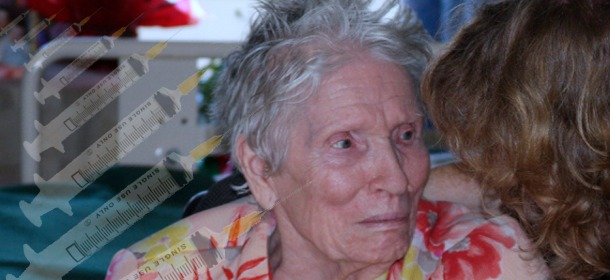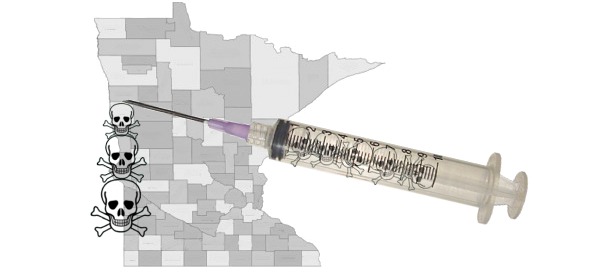Featured
Psychiatric Diagnoses Used to Avoid Paying Benefits to Soldiers
News over the last day about an American soldier in Afghanistan going berserk and killing at least 16 Afghanis, including 9 children, is absolutely tragic. There’s certainly a guilty party in this: the United States military.
There are limits to what a person can go through. The soldier in question was on his fourth rotation!
People snap when they’ve been through too much—and I will not stand in judgement of the person who does.
But the military does. It is, in fact, a carefully manipulated game that’s played with psychiatrists and their utterly fraudulent Diagnostic and Statistical Manual (DSM).
We know that many soldiers will break down under the stresses of war. At one time, it was considered shameful. Now, we at least recognize that it isn’t their fault, so it’s been given a name: Post Traumatic Stress Disorder (PTSD). However, that diagnosis means that it’s an injury incurred through military services. It therefore requires that the soldier receive a lifetime of care, and that’s expensive—estimated at around $1.5 million per soldier—and the number of such afflicted soldiers is increasing in the face of impossible circumstances and repetition of tours in war zones.
Therefore, they’ve come up with a ploy to avoid those payouts, and sometimes even demand refunds of signing bonuses! Instead of giving PTSD diagnoses, they’re slapping personality disorder labels from the DSM on them. The logic used is this:
The military screens soldiers for mental disorders on entry.
Therefore, no soldiers enter the military with mental disorders.
However, the stresses of military service can unmask an underlying mental disorder.
Therefore, any mental disorder diagnosed during military service must be a pre-existing condition.
Pre-existing conditions are not covered by the military.
Therefore, such soldiers are disqualified from military service and unceremoniously booted out.
This is, of course, outrageous. Only military-think could come up with such a chain of pseudo-logic. But there’s another culpable party in all this: psychiatrists.
Psychiatry likes to claim that their field is scientific. So why can’t they spot these “deficient” soldiers before entry into service?
Why do they go along with instructions from officers to give diagnoses of personality disorders when they must know that they’re confronted with PTSD?
It’s an unholy alliance.
How It Came Out
The story broke as a result of one woman’s experience. Captain Susan Carlson volunteered for the military at age 50. She was a social worker specializing in behavioral health, and the military needed people with her expertise. By her own admission, she wasn’t a particularly good soldier. Nonetheless, she had excellent job reviews. In 2008, she was deemed “highly talented,” “outstanding,” and “a dedicated officer”.
Then she was sent to Afghanistan at the same time her back started giving her trouble.
Her behavior became erratic. On one occasion, she went outside in only shorts when she should have worn her combat uniform. Apparently, she made an off-color remark to an enlisted soldier. She was sent to a psychiatrist and diagnosed with Personality Disorder NOS (not otherwise specified). Nice little catch-all, isn’t that? But it’s straight out of the DSM-IV (DSM number 4, the most recent version, soon to be replaced iwth DSM-V). And the shrink tossed in “with histrionic traits” for good measure—and probably because of her sex, too. It’s a bit hard to believe that a male soldier who’s out of uniform and makes an off-color remark to a woman would be diagnosed with the equivalent of hysteria.
That meant she was drummed out of the military. Without benefits. And with that mental diagnosis printed on her discharge papers. What do you suppose her chances of reentering her profession were after that?
A doctor from Womack Army Medical Center, Major Aniceto Navarro, gave her that absurd diagnosis. Even its name clarifies that he couldn’t find anything wrong with her: Personality Disorder Not Otherwise Specified sounds like a diagnostic bucket for “Nothing’s really wrong, so slap this one on.”
What made Carlson’s case different from 31,000(1) others discharged in the same manner was that she later found a note attached to her file. Navarro had written, “Her command specifically asks for a diagnosis of a personality disorder.”
And he delivered it! Like 31,000 others have gotten such diagnoses. How could anyone fight back? Who listens to someone who’s been labeled as mentally ill?
Soldiers sent to fight meaningless wars under horrific circumstances among people who don’t want them in their countries are subjected to tour after tour after tour … and as in the case of the man who shot 16 people … after tour. Some crack, like he did, and do something horrible. Others develop physical problems and start to behave erratically—pain can do that—making them even less desirable.
So, orders are given or implied or it’s simply understood that the soldier is to be given a diagnosis of mental illness. Poof! The problem of that soldier disappears.
Of course, the soldier’s problems are just beginning. Whether the diagnosis is legitimate or not, he or she has been labeled for life, very likely doomed to be conned or forced into taking hugely toxic drugs. Big Pharma’s happy. The shrinks have jobs. The military got rid of one costly nuisance. And no one’s the wiser.
Until now.
Above photo by Phil Kneen.
Sources:
- (1)Branding a Soldier With ‘Personality Disorder’
- Target 13: Soldier Fights Back After Personality Disorder Diagnosis
- Personality Disorder – Army’s Badge Of Dishonor
Tagged conventional medicine, Diagnostic and Statistical Manual, mental diagnosis discharge, mental health, mental illness, military, military mental diagnosis discharge, military mental health, phony mental illness discharges, psychiatry, soldiers discharged with mental illness
Related Posts
-
ColourSergeantMourne
















